Gender Roles and Fashion in 1920
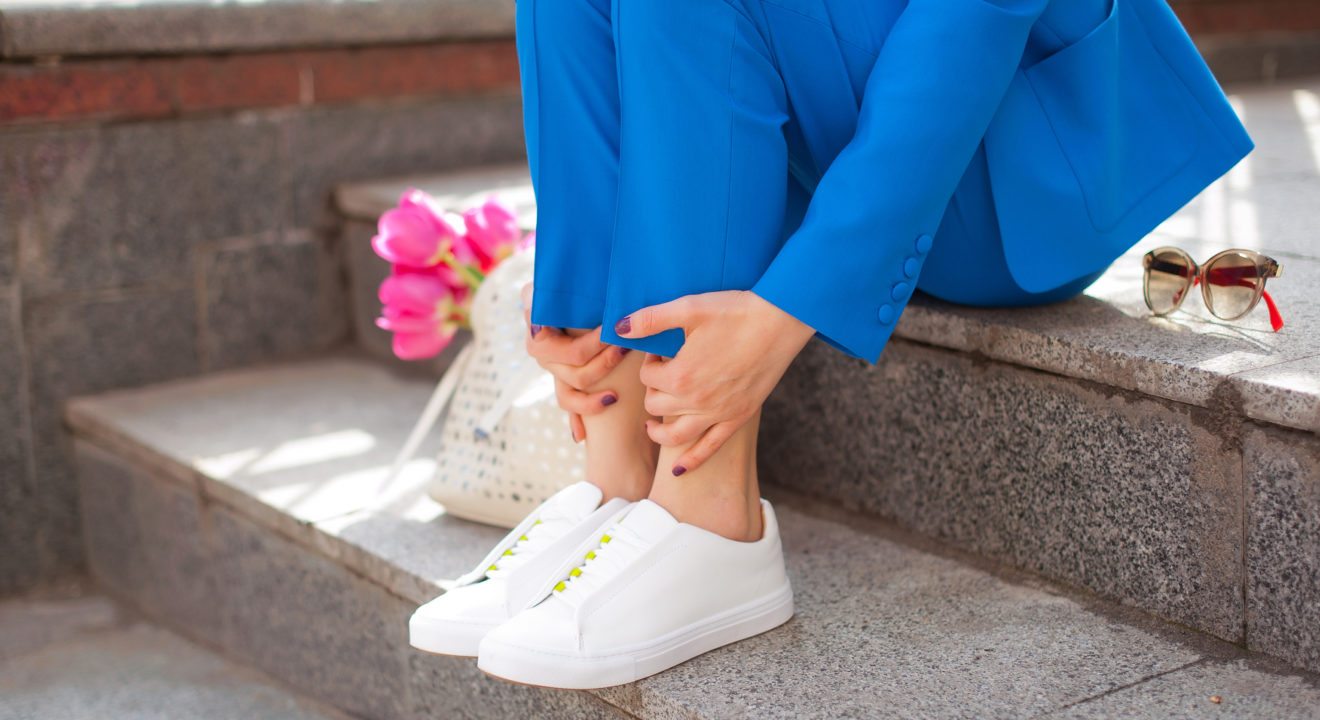
The Roaring '20s was the decade that changed it all for women'south style. In the 1920s, fashion was synonymous with the women'south suffrage movement and trading Victorian values for daring styles of the modernistic adult female. With that transition and liberation came pants, button-up shirts and suits. 1 could even argue that androgynous styles gained popularity considering women wanted to be taken more than seriously in the fields of business and labor.
How did 1920s fashion offset blurring the lines of masculine and feminine clothing? What touch did way have on the residue of society? And where can the 1920s masculine look nonetheless be seen in fashion today? To find out the styles and impact of 1920s style, ENTITY chatted with Jo Paoletti, manner historian and American Studies professor at the Academy of Maryland, and Leon Wu, founder and CEO of gender-neutral fashion brand Sharp Suiting.

Via GIPHY
Here are four clothing staples that helped bridge the gap between the sexes in the early 1920s, plus expert insight on these styles' importance and presence in fashion today.
1 The Collared White Shirt
The collared white shirt became a condition marker for men in the Victorian period in the late nineteenth century. It symbolized the uniform for the moral and masculine homo that was business-similar, only more importantly, accomplished. Information technology wasn't until the 1920s when wearing apparel codes became more casual that women started adopting the straighter lines of men's clothes. These collared shirts even inspired the creation of a masculine shirt particularly designed for women: a "middy," or a crewman'due south shirt given a few feminine touches.
READ More: Why Millie Bobbie Brown is Fashion's New Star
Equally Jo Paoletti explains, "The shift in gender expression in fashion in the 1920s for adults definitely tilted more in the direction of more masculine elements for women…[withal,] the term 'unisex' wasn't coined until the 1960s." The white collared shirt illustrates quite well how "unisex" habiliment starts to appear in the 1920s, but gains even more than traction – or even legitimacy – in later decades.
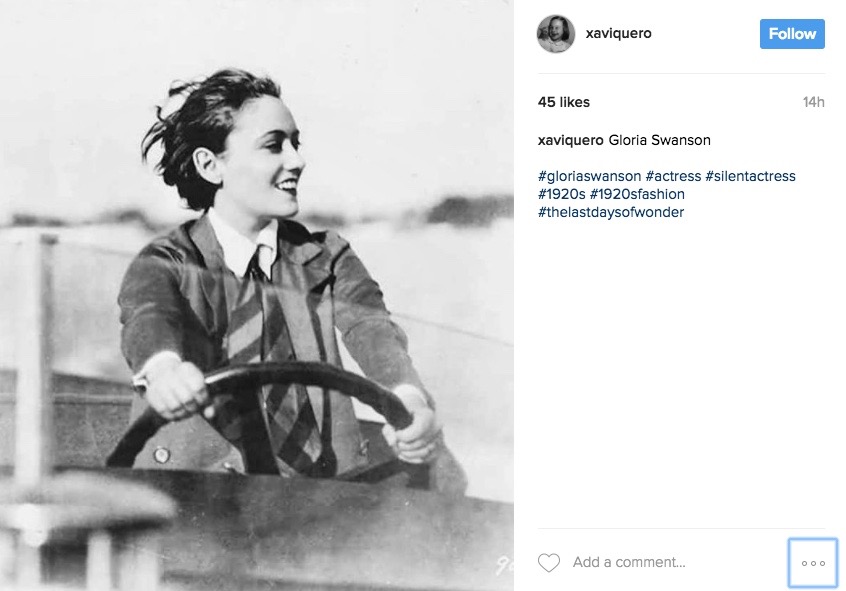
Actress Gloria Swanson
In fact, the white collared shirt became increasingly popular in the 1940s and 50s when Lauren Bacall wore the aforementioned white push-down as her co-star, Humphrey Bogart. This trend was besides seen on Hollywood stars like Audrey Hepburn in 1956, Ava Gardner in 1960 and Marilyn Monroe in 1961. No longer recognized equally a human's article of apparel, the collared white shirt had – and still has – get a staple in every woman's closet.
ii The Female Suit
Coco Chanel was the revolutionary female that inverse everything well-nigh women's habiliment. In the early 1920s, she designed the classic "Chanel suit," which was based on traditionally masculine apparel. This was the beginning accommodate designed for women, and information technology and opened the door for women to add male person silhouettes to their wardrobe – and wear them in the workplace.In fact, some even argue that this accommodate helped motivate women to continue chasing their professional dreams and retain their independence after Globe State of war I ended.
READ MORE: Why We Need Feminism in Fashion
Co-ordinate to Leon Wu, this feeling of empowerment is still i of the main reasons female suits are so popular today. "At Sharpe, our finely tailored mode is focused on gender equality through giving people the run a risk to genuinely live every bit themselves with the aid of our habiliment," he explains. (Leon originally designed masculine clothing for masculine women similar herself, but now identifies as a transgender man.) "Suits and similarly tailored clothing are an platonic garment to gloat important moments and live the well-nigh impactful version of yourself."
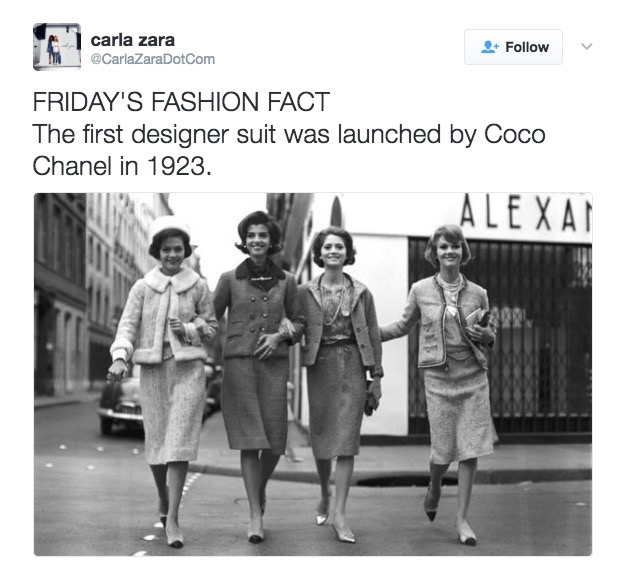
In the 1920s, women had but received the right to vote (every bit of 1920) merely were still fighting for other rights similar equal pay and admission to education. Present, the various contempo women's marches bear witness that there is still piece of work to be done for gender equality. And, in both eras and cases, empowering female suits may play a function in the gender equality motility.
3 The Oxford Shoe
You've probably heard Neil Armstrong's (allegedly misquoted) phrase: "That'south one pocket-size step for human, one giant leap for mankind." Of course, women wearing Oxford shoes didn't walk on the moon, merely this fashion trend was a pace forward for gender equality.
The Oxford shoe's popularity dates back to the 1600s in Europe, only it wasn't until the 1920s that women began sporting then as coincidental footwear. While men continued to wear the Oxford shoe for fancier occasions, women adopted them as a more coincidental add-on to their wardrobe. Finally, a comfortable shoe to article of clothing while playing sports or dancing the nighttime abroad!
READ More: Wear These Shoes Proudly: The Social Stigma of Big Feet
Co-ordinate to Jo Paoletti, "A tendency toward simpler, more tailored styles which may accept been seen at the time as 'modern' equally much every bit 'mannish.'" This idea can specially be seen in figures like the historical aviator Amelia Earhart, who was often pictured in Oxford shoes.
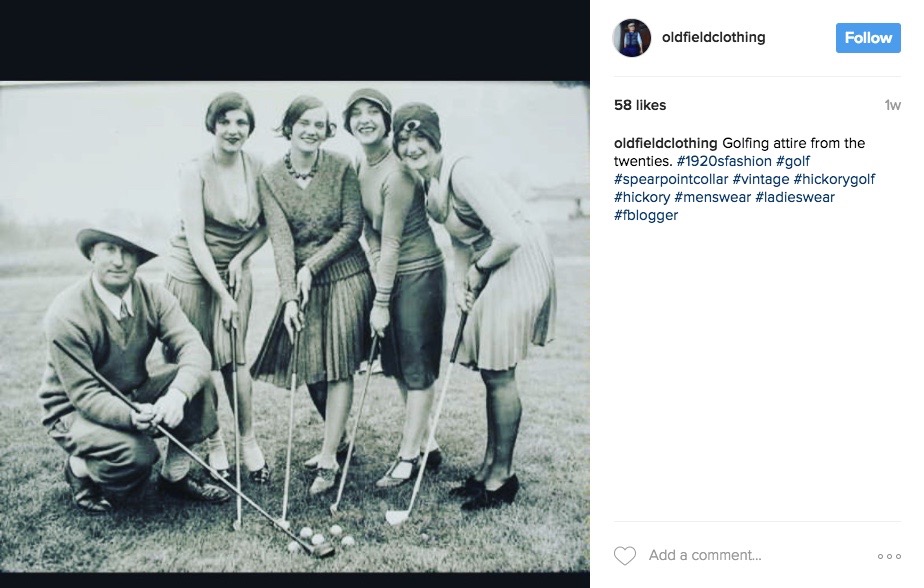
Today, Wu says Sharp Suiting "is not a standardized await or style; it'southward more than of a social aspect." Similarly, in the 1920s, women weren't necessarily trying to await masculine with their new styles; they were merely moving into the future where practicality, personal expression and female empowerment were priorities in women's fashion.
4 Pants
Equally odd as this might sound, pants were not e'er considered women's manufactures of vesture. Wearing pants during the Victorian period was a very radical idea, even resulting social and public ostracism. By the early 1900s, wearing pants was still seen as controversial. A few exceptions were, by the mid 1920s, wearing "knickers" (voluminous human knee-length wool pants) during sports or "bloomers" as school girl uniforms. Of grade, daring women like Amelia Earhart and Coco Chanel also wore trousers years before they were common.
Once the 1930s rolled in, pants became a more accepted part of female style. Just flick elegant women like Audrey Hepburn or even Zelda Fitzgerald!
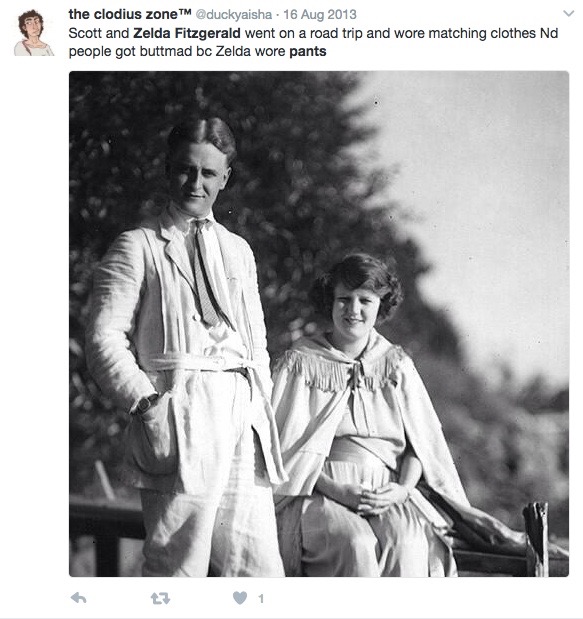
Pants are merely one of the examples of style's "unsettling" changes, with Jo Paoletti pointing out: "Past the 1940s and 50s, the 1920s were being depicted in popular culture as the depraved, costless-wheeling, immoral 'roaring twenties.' While some segments of society welcome changes to conventional mores, others establish the trends threatening and disturbing."
READ MORE: What You Don't Know About Fashion Icon and Humanitarian Audrey Hepburn
Today, yous may not think twice before sliding into your favorite pair of skinny jeans, merely for the thousands of women who came before you, pants were anything just simple.
The Bottom Line
The 1920s marked ane of the first times women began to explore masculine elements of fashion and aggrandize their style boundaries. Suddenly suits, Oxford shoes and collared t-shirts weren't just for men – and women learned how they could personalize these styles to brand them their own.
All the same, these styles didn't emerge and die in the 1920s. In fact, they still remain popular today. Why? Ane of the biggest reasons may be that their symbolism is still relevant to the modern woman. "Nosotros are still fighting for women's rights and that elusive gender equality," says Wu. "[As for clothes,] the trend today is you, and y'all in your most authentic form."
READ MORE: 2016: The Yr in Fashion
And this trend – of freedom, of personalization and of adopting a style that reflects your truthful self – is probably a goal with which every woman, from the 1920s or 2017, can relate.
0 Response to "Gender Roles and Fashion in 1920"
Post a Comment